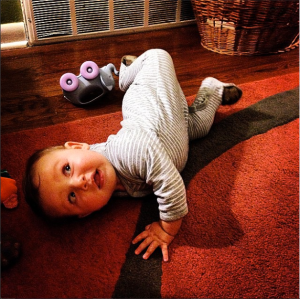I realize I haven’t written many 25-minute posts here, but that will change. Eventually. In the meantime, it seems like a good idea to post some homework assignments. This one isn’t very good, but I figure putting it out there may (or may not) attract some feedback. For one, I barely included any resources. I don’t know that this was necessary, but it’s certainly lacking in that department. Secondly, I really don’t have a handle on this academic writing at all. Thirdly, I’m not totally sure I understand either qualitative research approach well enough for this assignment and it probably shows.
Feel free to critique, just be polite about it.

Introduction
Mizzou K-12 Online is venturing into new markets throughout Asia and South America. This is new territory for an organization that has mainly designed instructional activities for students in the United States of America. The instructional design team has a theoretically sound model based on Wiggins and McTighe’s “Understanding By Design” which is constructivist in nature and values how students create their own meaning instead of having it handed down from an instructor or resource (Wiggins & McTighe, 2005). However, the organization’s commitment to designing student-centered courses fails to address cultural differences among these new populations of students that may not be addressed in this framework. Ignoring cultural learning differences and power dynamics does not adequately address student needs. In Howard Gardner’s book Frames of Mind: The theory of multiple intelligences, he points out that certain domains of learning are more valued in some cultures than others and that students living outside of those domains will find little or no success (Gardner, 2011). Additionally, Paulo Freire’s critique of the “banking system of education” suggests that a teacher-delivered content places the student in a subordinate position to the teacher’s or school’s role as distributor (Freire, 2000).
The goal of this research project is to assess how effective Mizzou K-12 Online’s instructional design is in supporting student learning needs in various cultural contexts and how student-centered it may or may not be. A better understanding is needed of these needs. For the purpose of this project, two research approaches were considered: participatory action research and ethnography. These two approaches give researchers a better idea as to what students need to succeed. The following table details how these two approaches may be carried out.
Qualitative Research Designs
Participatory Action Research
a. A major component of this project is to learn what online instructional approaches are most effective in addressing the needs of students in particular cultural contexts. The most direct way to garner this sort of information is from the participants themselves. Where test scores might reveal which approaches deliver desired results, students could contribute information to address how such scores were achieved or what approaches to instruction best suit their learning styles. A participatory design provides a sense of ownership that allows the students to help shape instructional design to meet their needs.
b. Research questions consistent with this design will likely be determined after trust is established with the subjects (Krishnaswamy, 2004) and then developed by the subjects. However, the following questions might be anticipated:
c. The role of the researcher in this approach resides in the design of student and instructor interaction as well as the collection of data. The researcher insures that the instructional design provides scaffolding to support a student-led process with both instructors and instructional designers ready to design the research and determine which data to collect. Without the proper scaffolding provided by the researcher, it is hard to depend on participants to follow through with a successful research project.
d. Student and instructor artifacts are collected from the LMS as chosen by students. Researchers will also conduct interviews so as to gain further insight into the impressions of participants.
e. The most important part of data analysis will lie in its nature as an agent of change consistent with this method. As the data commands it, the researcher, instructors, and instructional designers will need to actively make revisions to the learning objectives and activities of the course as they develop.
f. In order to address ethical issues, validity checks will be carried out to insure that the analysis is free of bias and accurately reflects the wishes of the subjects. Additionally, it must be made clear that the researcher is not seen as an authority figure. It may even be helpful to insure that an instructional designer or instructor who is not also the researcher not be assigned this project.
Ethnography
a. The purpose of an ethnographic study is to describe and interpret members and actions within a cultural group. It is difficult for one to understand the cultural needs of those from a different culture without directly observing practices and artifacts from within that culture.
b. Research questions consistent with the design may include:
-
How do students within a particular cultural context respond to the Mizzou K-12 Online instructional model?
-
Which components of the instructional model do students of specific cultural contexts react to in the most positive ways?
c. The researcher’s role in an ethnography is primarily as an observer and data collector.
d. Data collection will come from artifacts within the LMS and interviews conducted with instructors and students. Additionally, the researcher may observe chat logs in real time or as a transcript.
e. Data analysis procedures consistent with the design include organizing and coding the data in order to understand how the culture functions within this particular context. From this work, the researcher should be able to write a clear description of just how the students react to the instructional interventions in place within the online learning environment.
f. An ethnography requires an extreme amount of access for the researcher which produces a certain ethical dilemma that is particular to an online setting. It will be easy for subjects to forget about the presence of the researcher, letting their guards down in a way they might not in a face-to-face situation. Additionally, the researcher would have access to nearly all forms of communication within the LMS. Few if any correspondences would be truly private. The most effective ways of preventing these ethical issues would be to provide definite boundaries as to where and when the researchers may access student communications. Additionally, some sort of notification process to allow the students to know that the researcher is present could be created. Finally, a very detailed consent form should be provided to participants and their parents or guardians.
Conclusion
Both of the proposed approaches offer insight into the needs of students in a particular cultural context, but each provides different final products for the instructional design team to consider. These differences can primarily be found in who carries out the research procedures and makes the key decisions for the study.
The primary goal of discovering which elements of instructional design best meet student needs is collected from either the students’ perspectives (participatory action research) or that of the embedded observer (ethnography). In a participatory action research approach, the data collected as well as the design of the research is mainly dependent on the wants and needs of the subjects. What is revealed are the values and priorities of these subjects, something outside researchers would struggle to properly note. An ethnographic study would paint a clear picture of what takes place in this online learning environment from the Perspective oppere instructional designer conducting the research. The former approach provides insight from within the study while the latter gives a slightly less biased, outsider vantage point. Still, this information is invaluable in either instance, providing a clear picture of what students may need.
The largest difference in the two approaches may come from the results of the study. The participatory action research approach provides a model for how instruction should be designed for a particular group of students. The participants decide which aspects deserve the most attention and how the data is to be collected. The resulting analysis will give researchers a model of instruction preferred by the students. Conversely, the ethnography provides clear evidence as to how students respond to various factors in the design of the courses. This provides crucial information in understanding how Mizzou K-12 Online’s instructional design fits the cultural needs of the students subjects. When choosing a method, the researcher should consider whether he wants an instructional design model that meets student wants and needs or whether he wants to better evaluate an existing model in need of revision to meet those needs.
Since the ultimate goal in this study is to design effective online instruction that meets the specific needs of a culture different from the one in which the instructional design team resides, the participatory action research is the preferred approach. This approach aligns with the student-centered philosophy held by Mizzou K-12 Online without depending on the unbiased interpretation of the researcher and outside validity testers. Allowing subjects to participate and actively make decisions in the research design insures that their learning is a priority over instructional designers assessing their own product. Additionally, participatory action research provides solutions to the very problems it helps uncover. An ethnography merely paints a picture of how the students react to the instructional design already in place. The solution that should conceivably come from this study would be an instructional design or possibly elements of instructional design that best meet the needs of the cultural group in question. Depending on what the subjects determine to focus their energy, the study could be generalizable for similar groups of students in the same country or region. At the very least, the results would provide new avenues of research or minute fixes for the existing instructional design.
The choice to conduct a participatory action research study meets Mizzou K-12 Online’s commitment to student-centered, constructivist instructional design. The participatory approach firmly places the students (subjects) at the center of the research and provides them a sense of ownership of the process instead of relegating them to subordinate status. Constructivist learning principles are also supported in that students participate in reflective and metacognitive processes in order to design both the research as well as the instructional design. Conducting an ethnography does not accomplish these goals. Participatory action research is void of hierarchy and achieves goals that benefit the subjects.
References
Freire, P. (2000). Pedagogy of the oppressed. New York: Continuum.
Gardner, H. (2011). Frames of mind : the theory of multiple intelligences. New York, NY: Basic
Books.
Krishnaswamy, A. (2004). Participatory research: Strategies and tools. Practitioner: Newsletter
of the national network of forest practitioners, (22), 17-22.
Wiggins, G., & McTighe, J. (2005). Understanding by design. Alexandria, VA: ASCD.
Also…







